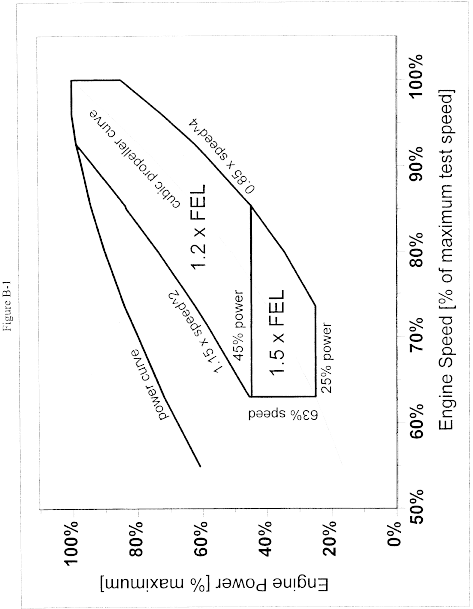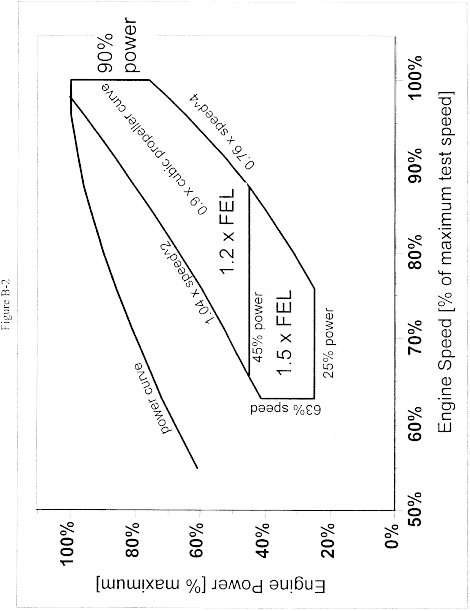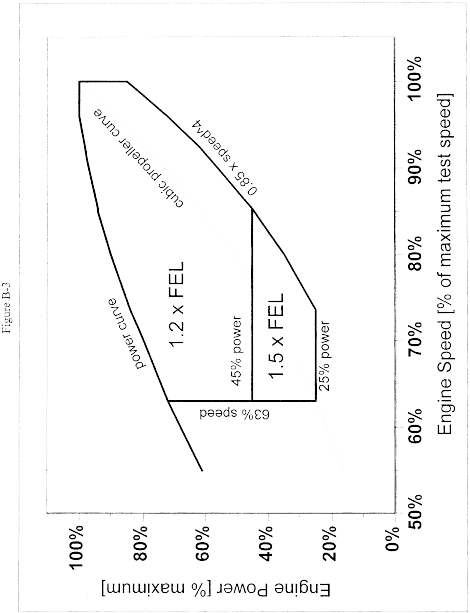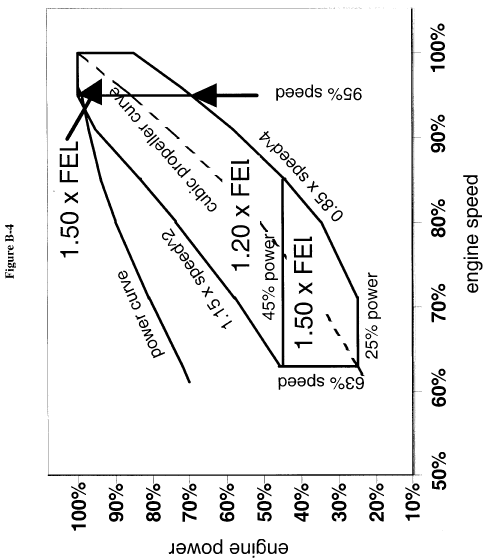Title 40
SECTION 94.106
94.106 Supplemental test procedures for Category 1 and Category 2 marine engines.
§ 94.106 Supplemental test procedures for Category 1 and Category 2 marine engines.This section describes the test procedures for supplemental testing conducted to determine compliance with the exhaust emission requirements of § 94.8(e)(1). In general, the supplemental test procedures are the same as those otherwise specified by this subpart, except that they cover any speeds, loads, ambient conditions, and operating parameters that may be experienced in use. The test procedures specified by other sections in this subpart also apply to these tests, except as specified in this section.
(a) Notwithstanding other provisions of this subpart, testing conducted to determine compliance with the exhaust emission requirements of § 94.8(e) may be conducted:
(1) At any speed and load (or any combination of speeds and loads that is nominally steady-state) within the applicable Not To Exceed Zone specified in paragraph (b) of this section;
(2)(i) Without correction, at any intake air temperature between 13 °C and 35 °C (or between 13 °C and 30 °C for engines not drawing intake air directly from a space that could be heated by the engine);
(ii) Without correction at any ambient water temperature (or equivalent) between 5 °C and 27 °C;
(iii) Without correction at any ambient humidity between 7.1 and 10.7 grams of moisture per kilogram of dry air; and
(3) With a continuous sampling period not less than 30 seconds in duration.
(b) The specified Not to Exceed Zones for marine engines are defined as follows. These Not to Exceed Zones apply, unless a modified zone is established under paragraph (c) of this section.
(1) For commercial Category 1 engines certified using the duty cycle specified in § 94.105(b), the Not to Exceed zones are defined as follows:
(i) The Not to Exceed zone is the region between the curves power = 1.15 × SPD 2 and power = 0.85 × SPD 4, excluding all operation below 25% of maximum power at rated speed and excluding all operation below 63% of maximum test speed.
(ii) This zone is divided into two subzones, one above and one below 45% of maximum power at rated speed.
(iii) SPD in paragraph (b)(1)(i) of this section refers to percent of maximum test speed.
(iv) See Figure B-1 for an illustration of this Not to Exceed zone which follows:

(2) For Category 2 engines certified using the duty cycle specified in § 94.105(b), the Not to Exceed zones are defined as follows:
(i) The Not to Exceed zone is the region between the curves power = 1.04 × SPD 2 and power = 0.76 × SPD 4, excluding all operation below 25% of maximum power at rated speed and excluding all operation below 63% of maximum test speed.
(ii) This zone is divided into two subzones, one above and one below 45% of maximum power at rated speed.
(iii) SPD in paragraph (b)(2)(i) of this section refers to percent of maximum test speed.
(iv) See Figure B-2 in paragraph (b)(3) of this section for an illustration of this Not to Exceed zone.
(3) For engines certified using the duty cycle specified in § 94.105(c)(2), the Not to Exceed zones are defined as follows:

(i) The Not to Exceed zone is the region above the curve power = 0.85 SPD 4, excluding all operation below 25% of maximum power at rated speed and excluding all operation below 63% of maximum test.
(ii) This zone is divided into two subzones, one above and one below 45% of maximum power at rated speed.
(iii) SPD in paragraph (b)(3)(i) of this section refers to percent of maximum test speed.
(iv) See Figure B-3 for an illustration of this Not to Exceed zone:

(4) For engines certified using the duty cycle specified in § 94.105(c)(1), the Not to Exceed zone is defined as any load greater than or equal to 25 percent of maximum power at rated speed, and any speed at which the engine operates in use.
(5) For recreational marine engines certified using the duty cycle specified in § 94.105(e), the Not to Exceed zones are defined as follows:
(i) The Not to Exceed zone is the region between the curves power = 1.15 × SPD 2 and power = 0.85 × SPD 4, excluding all operation below 25% of maximum power at rated speed and excluding all operation below 63% of maximum test speed.
(ii) This zone is divided into three subzones, one below 45% of maximum power at maximum test speed; one above 95% of maximum test speed; and a third area including all of the remaining area of the NTE zone.
(iii) SPD in paragraph (b)(5)(i) of this section refers to percent of maximum test speed.
(iv) See Figure B-4 for an illustration of this Not to Exceed zone as follows:

(c)(1) Upon request by the manufacturer, the Administrator may specify a narrower Not to Exceed Zone for an engine family at the time of certification, provided that the narrower Not to Exceed Zone includes all speeds greater than 63 percent of maximum test speed and loads greater than 25 percent of maximum power at rated speed at which the engines are expected to normally operate in use.
(2) At the time of certification, the Administrator may specify, or require the manufacturer to specify, a broader Not to Exceed Zone for an engine family, provided that the broader Not to Exceed Zone includes only speeds greater than 63 percent of maximum test speed and loads greater than 25 percent of maximum power at rated speed at which the engines are expected to normally operate in use.
(d) Testing conducted to determine compliance with the exhaust emission requirements of § 94.8(e) may be conducted at any ambient air temperature or humidity outside the ranges specified in paragraph (a)(2) of this section, provided that emission measurements are corrected to be equivalent to measurements within the ranges specified in paragraph (a)(2) of this section. Correction of emission measurements made in accordance with this paragraph (d) shall be made in accordance with good engineering practice. The measurements shall be corrected to be within the range using the minimum possible correction.
(e) Testing conducted under this section may not include engine starting.
[64 FR 73331, Dec. 29, 1999, as amended at 67 FR 68344, Nov. 8, 2002; 68 FR 9784, Feb. 28, 2003; 70 FR 40458, July 13, 2005]